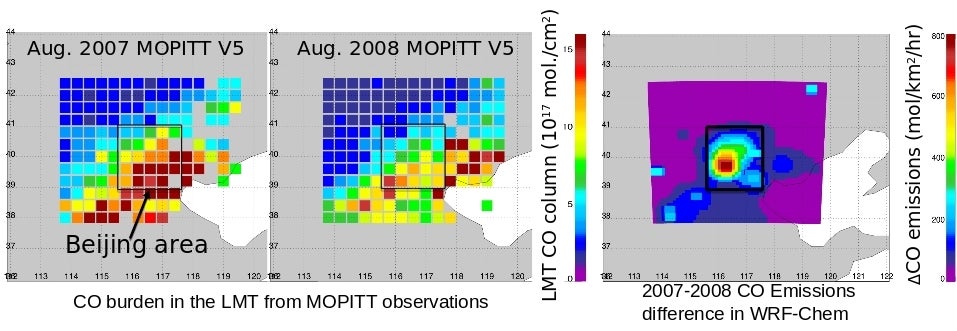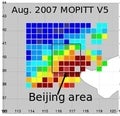Satellite-based estimates of reduced CO and CO2 emissions due to traffic restrictions during the Beijing 2008 Olympics
The MOPITT multispectral CO product along with model simulations from WRF-Chem have recently been applied to analyze emissions of both CO and CO2 during the 2008 Beijing Summer Olympics. The results suggest that urban traffic controls instituted during the Olympics significantly reduced emissions of CO and CO2. A manuscript by H. Worden, et al., describing this pioneering work has recently been submitted to Geophysical Research Letters.
Using multispectral CO retrievals, MOPITT measures a 6.5 ± 1.6 Gg[CO]/day reduction in average August CO burden in the LMT (lowermost troposphere = surface to 800 hPa) for 2008 compared to 2007 for the Beijing area. Using WRF-Chem to attribute changes due to meteorology and bias due to MOPITT sampling, we calculate a 4.6 ± 1.6 Gg[CO]/day reduction in CO emissions, in agreement with the bottom-up CO emissions reduction. From the emissions inventory by sector (Q. Zhang, personal comm.), we account for the fractional reduction in transportation sector, which has a CO/CO2 emission ratio of 0.04 for Beijing [Wang et al., 2010]. This gives a corresponding reduction in CO2 of 59 Gg[CO2]/day, which is significant compared to target CO2 reductions in IPCC scenarios, suggesting urban traffic controls could have a large impact on global CO2 emissions [Worden et al., submitted to GRL, 2011].

